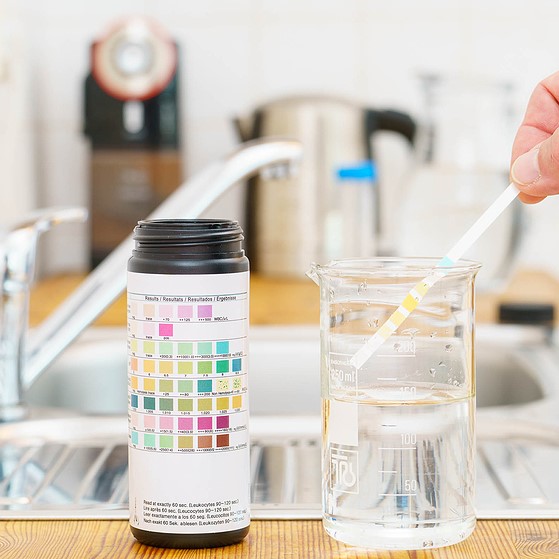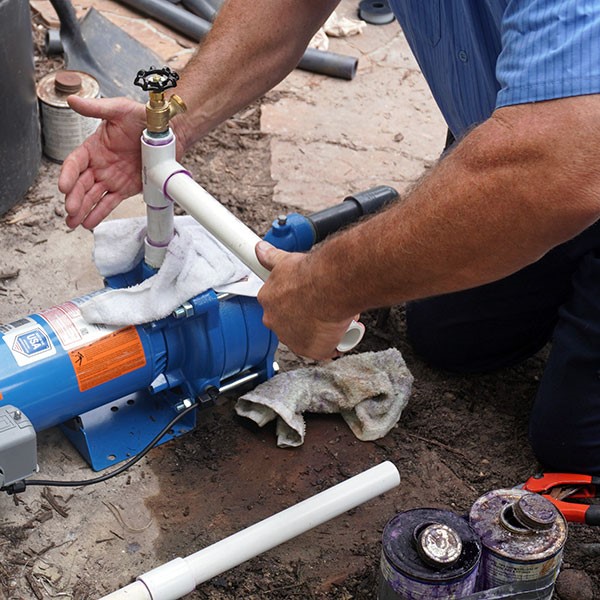Tips for Taking Care of Well Water
Many homeowners prefer the crisp, refreshing taste of well water. It is often high in minerals and nutrients that are good for you since it comes straight from underground aquifers. It tastes fresher and cleaner than city water since it isn’t chemically treated. The downside of well water is that it can contain harmful bacteria, viruses, or hazardous chemicals (often from pesticides, herbicides, or insecticides). Unlike city water, the burden for testing and treating your water is on your shoulder. Following these four best practices can ensure the safety of your well water.
Have Your Well Water Tested Annually
 There are many ways that harmful contaminants can find a way into groundwater. That’s why the National Ground Water Association (NGWA) recommends that homeowners and renters with a well have the water tested at least once a year for bacteria, nitrates, and other harmful contaminants. It is crucial to have your well water tested if your septic system has recently malfunctioned or if there have been any changes to your water’s odor, taste, or appearance. Changes in your water quality are often a warning sign that it’s become contaminated.
There are many ways that harmful contaminants can find a way into groundwater. That’s why the National Ground Water Association (NGWA) recommends that homeowners and renters with a well have the water tested at least once a year for bacteria, nitrates, and other harmful contaminants. It is crucial to have your well water tested if your septic system has recently malfunctioned or if there have been any changes to your water’s odor, taste, or appearance. Changes in your water quality are often a warning sign that it’s become contaminated.
Keep Hazardous Chemicals Away from Your Well
Many everyday household products, like anti-freeze and RoundUp, are hazardous. You don’t want chemicals from these products making their way into your well. Be sure to never use products with harmful chemicals—such as fertilizers, pesticides, paints, motor oil, and detergents—near your well. Also, avoid using them on sloping ground where they might drain into your well. Whenever you need to mix pesticides, fertilizers, or other chemicals with water, make sure you don’t put the hose directly into the container. Placing a hose in the container can allow back-siphonage, which may introduce these chemicals into your well.
Check the Well Regularly
 It’s wise to check your well cap or cover regularly. If the lid, cover, or casing is damaged, your well’s sanitation protection could be jeopardized. The well cap should be watertight and about one foot above the ground. There should be a mound around the well that deflects runoff. While you are checking the area, be sure to remove any leaves, twigs, or other debris that might have accumulated around it. An easy way to remember to check your well is to incorporate it into your routine whenever you mow your lawn or water outdoor plants. Always be extra cautious when mowing or working around your well not to damage the cap or casing.
It’s wise to check your well cap or cover regularly. If the lid, cover, or casing is damaged, your well’s sanitation protection could be jeopardized. The well cap should be watertight and about one foot above the ground. There should be a mound around the well that deflects runoff. While you are checking the area, be sure to remove any leaves, twigs, or other debris that might have accumulated around it. An easy way to remember to check your well is to incorporate it into your routine whenever you mow your lawn or water outdoor plants. Always be extra cautious when mowing or working around your well not to damage the cap or casing.
Seal an Old Well
The serviceable life of a well is about 20 years. If it’s time to retire your well and construct a new system, make sure you hire a qualified water system provider with the certification to seal your old well properly.
We hope that these tips help you maintain your well and enjoy crystal clear well water! If it’s time for your annual water test, give us a call! Our team at Tri-Florida Water Treatment are Department of Environmental Protection Certified Water Plant Operators. We offer FREE in-home water analysis for residents throughout the Lakeland, Florida, area. Contact us today to find out what’s in your water!
